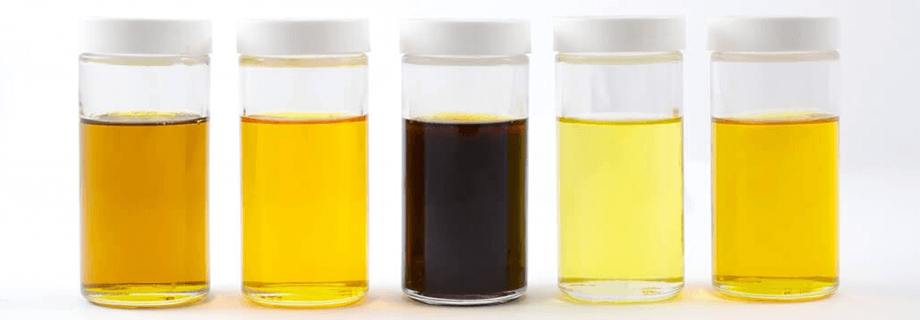How a Decanter Works

The process of mechanical oil pressing yields two final products: meal and oil. With our customers, the meal is typically the primary product, but some producers target the oil for use in the food, feed or biofuel industries. The oil usually requires processing before being used, however. A common first step is to clarify the oil to remove solid particles. The simplest way is to use a settling tank, but these can take a long time to process the oil and can take up a lot of room. The optimum method is to use a decanter (also called a decanting centrifuge).
Decanter Operation
The decanter processes oil as follows.
- Crude oil enters into the front of the unit into the scroll conveyor. There is a special feed area that allows this oil out of the scroll and into the bowl section.
- The bowl and conveyor rotate independently of one another at different speeds. The bowl spins faster than the conveyor and the centrifugal force forces the lighter density oil to the outside of the bowl. The solids are much heavier and do not get forced to the outside.
- Solids are pushed by the conveyor to the outlet.
Figure 1. Decanter section view
Adjusting the bowl speed, conveyor speed and internal components are required and vary depending on the oil type and solids amount. The clarified oil can either go to storage or to further refining. The solids are generally blended back into the final meal prior to cooling. While its oil content may be high, the overall percentage of solids compared to final meal amount is very small.
Other things to consider
When mechanically pressing oil, be aware that there will be a certain amount of solid particles within the oil. This can range from 2-5% or more, depending on a variety of factors such as seed type, processing parameters, etc. Some producers can sell the oil in this state, but others may want to start the clarification process as co-ops may require partial clarification to remove some of the solids.
Once decanted, the amount of solids are within the oil are greatly reduced. It is not uncommon to have solids content well below 1% after decanting. It’s important to note that this is NOT “refined oil”. The oil itself still contains particles known as gums that are typically undesirable, especially for food applications, so further refining is required for food applications. The oil may be appropriate in this state for feed applications.


